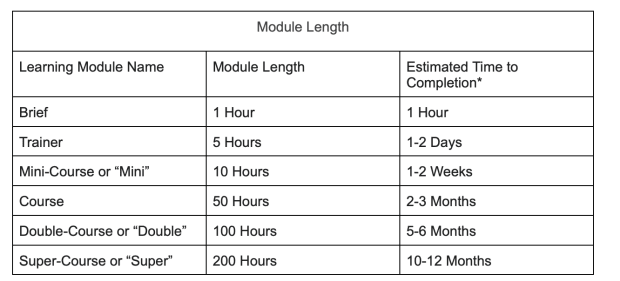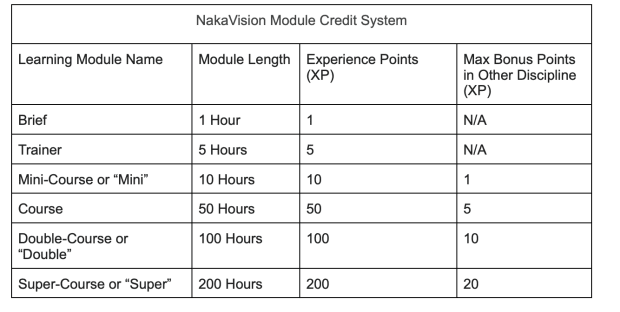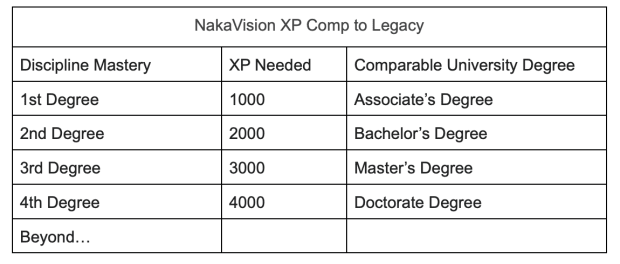A vision into the future — what would the education system look like under a Bitcoin standard?
Author Disclaimer: The following work is analogous to fan fiction in your favorite sci-fi world. I do not intend to infringe or misappropriate any real-world ideas or work. Any similarity to concepts or work is purely coincidental. This is Part One of a series I call “Bitcoin: What-If.” Marvel can’t own that, right?😉
What If … Education
Centralized education has failed the individual. That’s not to say that all students are failures. Rather the education structure employed by most of the civilized world 1) creates an environment that picks winners and losers much like the fiat monetary system, 2) has not kept pace with the rate of technology and information growth in subject matter and infrastructure, and 3) discourages free thought while driving its participants to capitulate to a specific viewpoint.
The compulsory education as known in most of the contemporary world ironically fails to remain contemporary. The infrastructure of the academic system has made little change since the “Committee of Ten” established it at the end of the 19th century.
With that structure came many other philosophies that have shaped the country’s and the world’s general outlook on education. The Committee of Ten of 1892, made up of high school and collegiate educators, determined that “…every subject which is taught at all in a secondary school should be taught in the same way and to the same extent to every pupil so long as he pursues it, no matter what the probable destination of the pupil may be, or at what point his education is to cease.”
What does this sound like? Keynesian economics, which is a “macroeconomic economic theory of total spending in the economy” according to Investopedia, chooses to minimize the importance and uniqueness of the individual’s action. This perspective chooses to employ generalizations, prejudices, and heuristics over critical thought and tailored analysis that answers questions about human action and individual incentives.
Contrarily, Austrian economics “can be expressed in terms of microeconomic foundations,” as Steven Horwitz stated in his book “Microfoundations And Macroeconomics: An Austrian Perspective.” From a rational perspective, the macro/corporate entity is made up of the micro/individual, not the opposite. Therefore, if the capability is available, the individual must be the basis of economic study.
Education has missed out on true prosperity similar to the corporate-focused Keynesian economic world. This has resulted in individual students being left behind for the sake of “taking the easy road.” Even The Committee of Ten claimed that better academic success would follow the simplification of teacher training through the unification of content taught. To these academic central planners, it was more important to get a task completed than to get a task right!
Where does this track of thought lead us? To accept information propagated by authority because of the existence of the office rather than the rationale resonating from the office. In other words, “Do not question what you are told.” What is science? Prior to 1900, a sovereign creator was considered a legitimate origin theory. In the 20th century, the uncontested centralized perspective states that man evolved from fish. Instead of encouraging the understanding of both positions and enabling Socratic learning for students to choose (and maybe change their mind over time with more information), educators of the “free world” oppress one view and promote another. As long as there is a centralized mandate for education, it will always be a form of social programming.
While science may be an acceptable compromise to those that wish to erase the concept of God, the same forced narrative takes place with the dissemination of history to students. Did President Abraham Lincoln really care about the evils of slavery or did he want to preserve the union’s tax revenue golden goose in the south? Was President Franklin Delano Roosevelt a courageous hero of freedom or did he bait the Japanese to attack Pearl Harbor to sway the public and Congress to favor a lucrative total war in Europe? Is Black Lives Matter a destructive Marxist group preying on social strife in America or are they the new banner carriers for civil rights like Martin Luther King Jr. and Malcolm X before them?
History and science in a fiat world is written by the victors. The education of our youth is directly impacted by this coercive, centralized approach.
While the argument over “whose science” and “which history” could be debated endlessly, the subject matters of English, science, history and mathematics have been the core of primary and secondary education since the Committee of Ten report over 125 years ago. All the while, as finance and economics are immensely more important now than before, students are still learning about flowers in biology until ninth grade. We are in a world where five-year-olds navigate touchscreen operating systems, but software design is rarely available as an elective for highschoolers. One could place the blame on a slothful industry lacking initiative or funding to progress. But if this system is truly another pillar of the fiat ponzi scheme, then the limited, outdated, and redundant education is by design to inhibit broad scholastic progress. Therefore, to protect a skewed system where the powerful few understand and monopolize control over money, it would be counter-intuitive to educate the masses about how their natural rights are continually infringed.
Natural rights? Where in school do we discuss if we have natural property rights to our body and our labor? Is that up for a debate? Or is that part of the education that in order to justify government encroachment of property, people must never think they truly own anything, including themselves? We are left with an education system where the student, without intervention of a parent, church, or their own pursuits, will be subject to learn twisted history, skewed science, unapplied mathematics, and centralized literature. Additionally, students remain unaware of the natural laws of existence as a human and receive zero instruction on navigating the economic landscape of this world. Academics, as it is today, is antithetical to the concept of liberty. Its proponents must fervently defend the wasted time of students and money of taxpayers so as to protect the most efficient avenue for propagating control over the next generation: abject nascence. But all is not lost. As you may have heard before, Bitcoin fixes this.
It Is Sometime In The Early 2040s …
In this future there is hope. In this future, humanity prospers. Fiat money has capitulated to Bitcoin, the decentralized monetary network, and has consumed nearly all value of many countries’ fiat wealth. Through years of violently volatile trading with world governments being public buyers, bitcoin surged through bull and bear markets whose end was only marked by the 2033 Bitcoin International Treaty (B.I.T.) to dismantle central banks across the world for the sake of a new Bitcoin monetary standard, 100 years after Executive Order 6102 that forbade the individual ownership of gold by U.S. citizens for a period of time. Nearly all governments in North America, Europe, South America, South Asia, Middle East, Africa, would adopt bitcoin-backed regional digital tokens (dollar, euro, peso, rupee, dinar, franc). These currencies had levels of government oversight and insurance that was more palatable to a segment of the population.
Some countries in Oceania and Asia remain obstinate to a hard money supply, like China and Australia. They did not participate in B.I.T. and outlawed owning any alternate currency or token, especially bitcoin. Instead they chose the path of surveilled and coercive CBDCs as they continued to slowly steal the wealth from their constituents. CBDC implementation was made easier upon outlawing emmigration a few years before as citizens of some countries became essentially prisoners.
Because the Bitcoin world virtually ceased inflation, the exchange rate of 1BTC became 25 million North American dollars. As the age of central banks came to a close, governments also began divesting other areas of society on which they had previously dominated. The world quickly discovered the limitations of government reach when sound money is the root of all human action.
Forced Adaptation
The COVID-19 pandemic forced many to make drastic, unprepared changes in their educational life. Parents were not ready to police their children for at-home learning. Students lost fear of discipline for absent-mindedness and effortlessness. Teachers began to mail-in their effort behind video conferencing and irregular meetings. They were also forced to make due with curriculum and tools not designed for distance learning.
As society moved past the pandemic, something interesting, yet familiar happened: humanity found opportunity in apparent barriers. Schools began to leverage premade online courses as aids to in-person education. High-achieving students showed similar concept retention as with live teaching. The more automated lessons were implemented, the more teachers were able to act as supplemental tutors focused on lagging students. The problem with many traditionally “poor” students was found to be a lack of attention from teachers. This was an impossible issue to solve with overcrowding classrooms. The relationships teachers made with these students became a difference-maker for overall classroom success when implementing this simple technology supplement.
The teaching profession was going through a redefinition, not an extinction. Construction workers were not made non-existent because of cranes and bulldozers. Accountants did not disappear because of tax software. These individuals were rather empowered to achieve more with technology at their disposal. Teachers at this time in history similarly were able to inspire excellence from their students because they had more time to actually teach and less time needed for lesson planning and regurgitating concepts taught millions of times before. Not surprisingly, students greatly benefitted across the spectrum raising performance in various metrics like standardized tests and qualitative feedback about their learning environment.
These successes were not without challenges. In this Bitcoin future, endless government spending was simply not an option without overt, public debasement of the regional currency. Taxation without inflation was not enough to maintain many state-operated institutions. The traditional academic infrastructure suffered despite measurable student success. Many teachers quit the industry. The ones that did not experienced furloughs and layoffs, but as learning modules were refined, the teachers left behind were able to administer more students at nearly all grade levels and the academic progress maintained despite a rapidly rising student-to-teacher ratio.
Lightning: A Decentralized Information Network
As the Bitcoin Lightning Network matured, decentralized video services grew in usage as uncensored alternatives to YouTube grew in demand. There people could create content and earn in multiple ways, such as streaming satoshis per minute, charging a lump sum per video, periodic subscriptions, tipping and more. The streaming service “NakaVision,” in particular, attracted educational content because of the “live party mode” that enabled the publisher or a proxy to interact with viewers during scheduled sessions. These premium options enabled administrators in the virtual room to play the role of teacher assistants that provide live help to prerecorded courses that air at specific times. This was not always necessary, but came in handy for math, science, and social studies classes where live problem-solving and discussion was a part of the learning process.
NakaVision established a standard for course length that publishers could follow. This suggested standard was one major step toward enabling their courses to compete with traditional academic course credit. The service was leveraged for on-the-job training, compliance training, and academic curriculum.

It soon became the one-stop shop in the Bitcoin world for all virtual learning. However, because of the decentralized nature of the network, every user enters a unique agreement with each content provider as they are sovereign over their own node. There is no centralized effort by a platform to promote, propagate, censor, or cancel content. This was something that older centralized services pretended to provide, but never did.
NakaVision also featured a machine learning protocol that captured questions asked about the published content. Early after a publication, the creator may have some work cut out for them to address questions from their audience. After a piece has been published for a significant time however, question-and-answer periods could be nearly autonomous as old questions that come back around would be addressed by the system. This technology dramatically reduced the required man hours to maintain a dynamic learning environment. Newly-published work could even import Q/A databases (if allowed) from similar courses so as to reduce the need for future content to start from scratch. Technology, again, was driving the cost of knowledge acquisition to zero.
The Free Market Of Knowledge
Outreach through education became a new social marketing frontier for this decade. Not education about products for sale, but about industry-applied processes and knowledge. This seemed to matter more in the Bitcoin world than the values-based social marketing of the early 21st century. Back then, microeconomic decisions were primarily based on how much a company pandered to an individual’s morals. The economy became a political game of poker to see who could spend more resources not focused on productivity.
In this Bitcoin world, companies set themselves apart by how much they contribute to the knowledge of the future generations. All of this was done with little effort because they simply taught what they did. Marketing firms creating marketing education content. Aircraft producers taught aeronautical engineering and physics. Some companies with larger marketing and outreach budgets created entire academic branches to manage and distribute content that would equate to hundreds of hours of educational content for the edification of society and the advancement of an industry.
The topics of lecture were as vast as the internet. Where the Committee of Ten determined that “every subject which is taught at all in a secondary school should be taught in the same way,” this could not be further from the truth in the Bitcoin world. Never before have so many perspectives of history been readily available to students. Students, given the choice, actually desired more challenging modules that were relevant in the real world. Secondary students had an appetite for the design of the Tesla robot, 3D printing from Nano Dimension, multiple philosophy courses, and Austrian economics that inspired the Bitcoin network they grew up in. Alternative methods of learning like Socratic teaching were often implemented which guided students to ask the right questions rather than telling them the right answer.
The subjects that attracted the least interest were basic math, unapplied science, and traditional history which took up most of students’ time in the 20th century. These courses were seen as distractions and one of many causes for the Great Inflation Theft from 1971 to 2031 that kept generations of students unaware of the fiscal policies that hurt so many people.
Testing centers have always been a part of society for professionals to acquire certifications for program management, architecture, engineering, medicine, and law. These centers exponentially grew in popularity as a form of integrity control for countless virtual education modules online. Because these centers charged both tester and testee, there was a cost benefit for both sides to optimize the number of graded exams. While too few may not be able to test enough key factors to the course, too many tests would result in undesirable fees to the testing centers. In this free market of education, the better-quality instructions were often given a longer leash to test students more frequently, but if a competing course offered a similar quality lesson and required fewer sessions at the testing centers, a change in market share could occur as students look to maximize their value. At the same time, a course that tested students too little could result in graduates that do not prove concept retention in future courses or jobs. This would result in poor marks for the course from the industry at large.
While there were corporate sources for education, there were also comparable grassroot modules as well. These groups did not represent any significant business, but out of the passion for a topic, propagated knowledge for the masses to use for their own benefit. While some were free, most used a recurring fee system so a student was incentivized to complete a course efficiently and without unnecessary delay. Because of the ability for nearly anyone to access these courses, there was no need to charge exorbitant amounts of satoshis or regional currencies. Technology was driving the cost of knowledge acquisition to zero.
Gradually, Then Suddenly
A large city in Colorado made a decision that shocked the country: they set in motion to abolish their municipal school district over the course of five years. In the place of dozens of education department administrators and educators was left a charter, some student counselors, and a few clerks to aid in transition. Their rationale was that all the infrastructure for students of traditional K-12 grade to learn was publicly available for less money than tax revenue to operate the legacy school system. They felt the legacy system was actually infringing on their maximum learning potential and maximizing the use of NakaVision would result in a diverse and inclusive academic experience allowing students to enjoy the pursuit of knowledge customized to their person rather than a one-size-fits-all plan. The city created a simple charter for all stakeholders.
- Students shall maintain 25 hours per week of academic lecture upon the NakaVision network.
- Students shall leverage open-source curriculum programs of their choosing from NakaVision with signed parental consent.
- Students shall leverage privately-owned testing centers as necessary for course completion exams.
- Counselors shall assist students as requested in selecting modules.
- Student athletes and performers are free to participate in the Amatuer Athletic Union and other private amateur programs alongside their normal course load.
- Students athletes and performers are free to participate in major or minor professional organizations or entertainment with a tailored version of their curriculum not to subceed 10 hours per week.
It was a drastic change from the bureaucratic and archaic mess schools were in before. But because of NakaVision and technology growth in general, it became more apparent of the abject waste that students were forced to endure simply because that is the way it always was. If Bitcoin changed the monetary standard, then it was only logical that other institutions were to be at least audited.
A year later, a small city in Pennsylvania decided to try the same thing. A few months later, Las Vegas jumped on the bandwagon. The next year, the entire state of Texas pledged to abolish all school districts within 18 months. Academia was being flipped on its head, but students were not the only beneficiaries.
Teachers Wanted
Public school teachers were at a crossroads. While some moved to other towns and continued their life as normal, others saw the writing on the wall and realized the profession as they knew it was changing forever; there was no running from this revolution. As much as technology made traditional university and secondary school virtually obsolete, there was still a significant role for child education specialists in the Bitcoin world. With some exceptions, there was a very real need for specialists to educate ages five to 10 (K-4 grade) for localized in-person learning. Private institutions grew in number and provided a service for parents, as necessary. While there was still use for NakaVision education modules for the youth, much of the teaching at these formative levels was delegated to live instructors.
Because this became such a unique gap in the NakaVision, primary-level educators became much more desirable in the free market. A second-grade teacher in the old system was restricted by the price disruption of the government system to make true free market earnings. However, those primary educators filling such a critical need in the new decentralized world earn two or three times more value compensation for a similar career in the old fiat world. This not only increased the competition, but the quality of professionals. Much like a coveted position on a sports team, they worked diligently to earn and keep their job.
A World Without “Mean Girls?”
While the teachers were needed still in the lower legacy grades, education was near-autonomous in the more mature courses. Without a center needed for students to congregate for learning, students had no mandate to congregate socially. The very fabric of how generations of teenagers defined their childhood was abolished. The unrealistic, ephemeral social hierarchy of middle school and high school did no one favors growing up. The social roles in the legacy academic social system generally encouraged elitism and popularity based on athletic prowess, threat of physical violence and lawlessness (underage drinking and drugs). Because there is no free market in the schools, the most valuable social currency was always the “shock” factor. How far can he throw a football? How many nerds will that bully beat up? How wild of a party can they throw before the police break it up? When the centralized school was abolished, students not only congregated amongst groups that shared their ideals, for they already did that, but they were now in virtually no contact with the other groups that formed the artificial social structure. Athletes socialized with one another, but were no longer school heroes because there was no school. The school bully had no victims to cross paths on a normal basis. The pretty girl’s popularity, while she surely would still receive her fair share of attention, was drastically reduced without the test-tube universe that was high school.
Students in this Bitcoin world leveraged their newfound sovereignty over their time to revolutionize their social life. While peer pressure never fully went away, the traditional high school forced interactions within social groups that generally would never take place in the adult world ceased. These situations often led to feelings of violence and abuse for the losers and a false sense of value for the winners in the social construct. Rather than creating a more disaggregated society, students instead interacted with those outside their social group with more humility and respect. This has inspired some people to a call for society to move on from democracy, which always devolved into objective mob-rule, and to a form of rules of government that respects all participant’s property and being. I want to live in this world!
The University: The Temple Is Destroyed
“The University” has been the symbol of many facets of human progress for centuries. Libraries to store knowledge, laboratories to expand science, great halls to share ideas, and alumni networks to extend its reach into civilization and industry. To some it is a romantic representation of human achievement. To others, it is a thick pillar of the fiat world that is a gatekeeper to information and power.
Universities for years were losing their value proposition as many people in the 2010s began to question the benefit of a degree which cost three or ten times more than prior years. The rapid growth of the internet combined with the productive deflation of bitcoin created exposed the university system as simply too archaic and sluggish to provide real benefit to the people of the 2030s and beyond. The growth of technology and their relevant expertises were seldom able to be taught effectively because those experts were needed too much in the productive market. Education for cutting-edge topics like augmented or virtual reality, robotics, or nanotechnology was rarely found in the halls of the university.
With the lack of relevance of the most contemporary areas of human progress as a value offering, institutes of higher learning began to divest their catalog. World-renowned schools like those in the Ivy League began to draw straws amongst one another, narrowing their scope to specific fields. Harvard focused on medicine, University of Pennsylvania focused on business, Princeton narrowed to mathematics. State colleges and private universities followed suit narrowing their discipline to law, medicine, engineering, or philosophy. The divestiture increased the quality of the education experience, as removing cost-burdened departments decreased the cost of attendance which made traditional schools more affordable. This was enough for colleges to remain an option for those teenagers that desired to leave the nest to study. Nevertheless, digital learning was an industry-killer and reduced college enrollment by 85%. The world of academia had its bubble popped by the Bitcoin standard. Even though traditional education was more affordable now than it had been in over 40 years since the 2000s, most students chose not to pursue that route.
The Learning Game
The Bitcoin world in the 2040s was a renaissance of learning. People wanted knowledge because it was increasingly more affordable, increasingly uncensored, and accessible. The knowledge from the decentralized platform, NakaVision, was high quality but it was not the same as a college degree. There was no mandated course track. There was no lambskin at the end of the journey.
The NakaVision community developed another standard that would help students organize their learning goals in a way that would be value-added for them and for job offerers that could more accurately assess relevant knowledge acquired. Modules were assigned experience points or “XP” for the focused discipline or function that was taught. Additionally, each module was allowed up to 10% bonus XP based on other supporting subjects involved. Experience points like in a role-playing game brought a bit of gamification to learning and encouraged the pursuit of knowledge beyond the confines of traditional learning years.

A student could take a physics “double” that features a 10 XP bonus credit on math. A philosophy “course” could heavily reference historical context and feature a 5 XP credit in history.
Students in this network would work toward achieving degrees of mastery. Different from the university system, there is no bias for academic milestones upon a university name at the top. NakaVision put forth a metric system for learning milestones as a way to bridge the gap during this period of parallel systems:

In a parallel system of tracking and assessing knowledge and competency, the mastery system had the advantage of identifying gates or milestones, but was not an all-or-nothing system like traditional college. Your NakaVision learning profile could say “1500 XP in Mathematics and 1000 XP in Computer Science.” This is much more granular and personal information than “Bachelor of Science in Computer Science” based on the work you as an individual student accomplished.
This system did not tax the students’ time through general education under the disguise of a benevolent mandate. If a student wanted to be a nurse and a job required a first-degree nursing mastery, they did not need to waste their time through philosophy, trigonometry, or creative writing. The courses for nursing would essentially be self-contained where once completed you were indeed qualified as you could be without on-the-job training.
Traditionally advanced degrees like law and medicine would even still be first-degree if that is the value of relative training. However, a first-degree of medicine may have already received a first or second degree in biology or general science.
The education system of the past became a gatekeeper for who was allowed to learn and consequently who was allowed to pursue careers. NakaVision became a byproduct of the Bitcoin monetary standard balancing the playing field of education through the use of technology and decentralization.
Getting There From Here
Jumping back to the present day, it is easy to see this education system built upon the tools and mediums we have now.
Homeschooling is a concept that has pushed the limits of innovation and creativity. Pre-recorded VHS tapes were used for teaching in the 80s and 90s. I spent most of elementary school in a 90s virtual setting with Abeka Academy who is still innovating their process decades later. My mother took it a step further with my siblings by using more than one home education service. One she chose for math and science while another was better at language and social studies. When is optionality not a good thing? Anything that monopolizes your time or effort is a form of slavery or bondage. Some students may indeed benefit from a traditional classroom, yet that does not mean all should be compelled to partake in the same practice.
The Saylor Academy and the Khan Academy are both non-profit education organizations whose goals are to bring education to the world free of charge. Leveraging technology today, this is possible with donors. This medium is not a fad. It will continue to improve alongside technology and entrepreneurship. AR and VR are not off limits as an enhancement to educational experiences in the future as well.
This is not doomsday for teachers. To the contrary, teachers will be more celebrated than ever before as technology and the free market will bring the best teachers to a wider scope of appreciation where they can impact more with their ability to convey knowledge. Additionally, their time will be freed up to develop relationships with students they could never have in the past, bringing teaching back to the mentorship and apprenticeship of the times of Aristotle and Socrates.
Bitcoin will not only refine the way we transact, but the way we educate, and learn.
Credit to Heidi Porter and Mark Maraia for peer review. Credit to @bitillustrated for the awesome cover art.
Have you signed #DOMI yet? Check out declarationofmonetaryindependence.org and lend your support for a document that unifies us against the incumbent system.
This is a guest post by Ulric Pattillo. Opinions expressed are entirely their own and do not necessarily reflect those of BTC, Inc. or Bitcoin Magazine.






